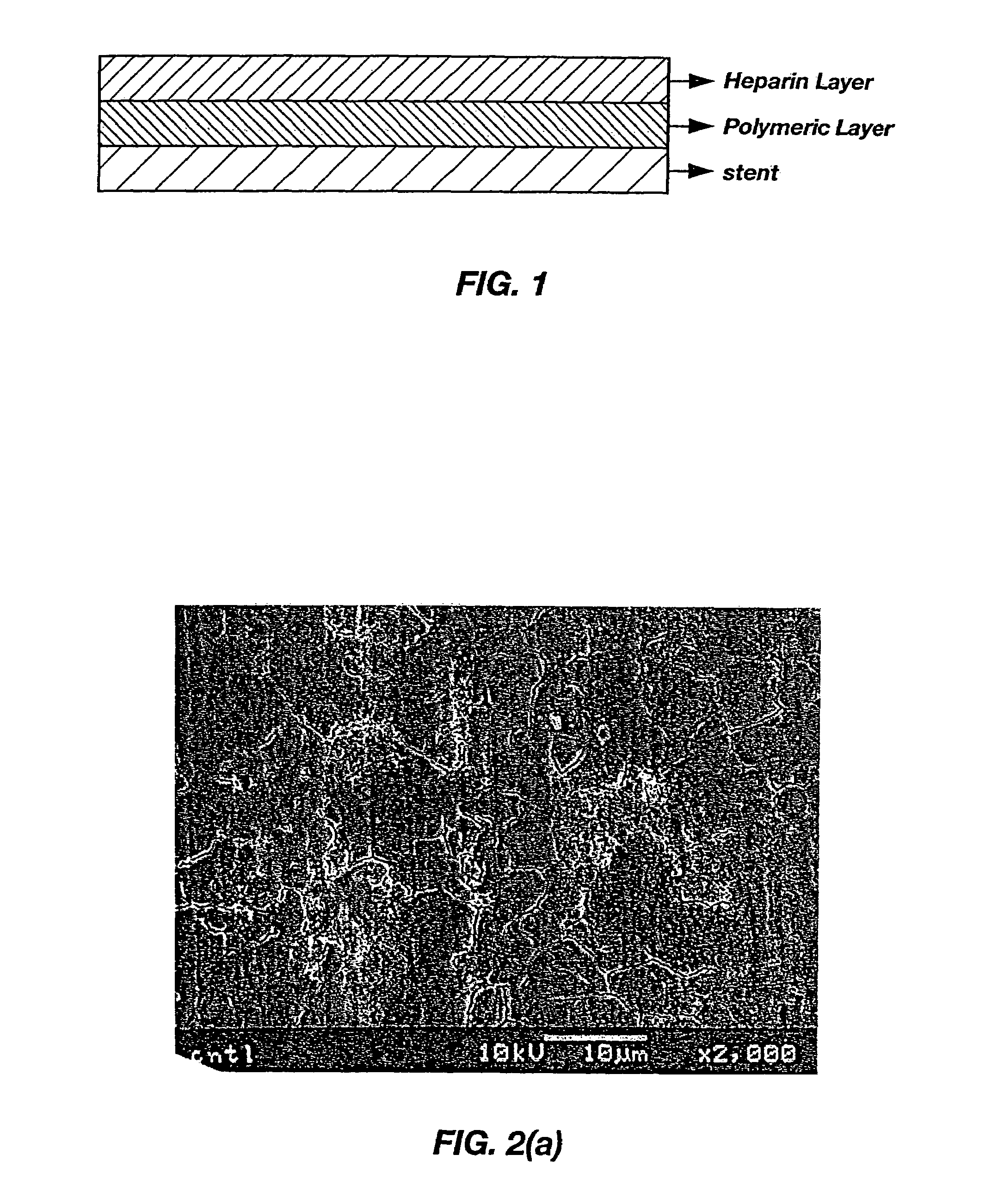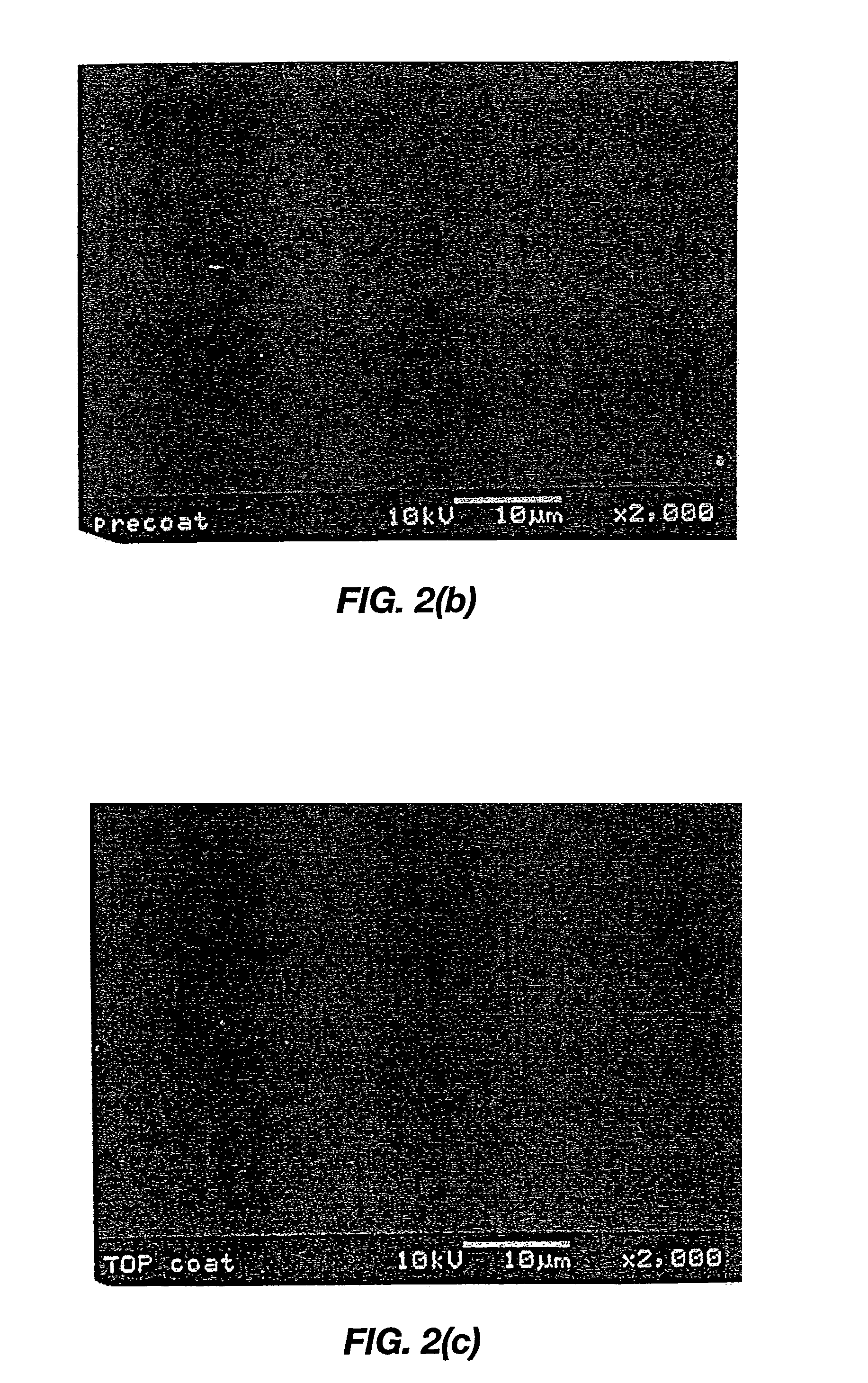Drug release from antithrombogenic multi-layer coated stent
a multi-layer coating, antithrombogenic technology, applied in the direction of blood vessels, packaging foodstuffs, packaged goods, etc., can solve the problems of stents not 100% effective in preventing restenosis, vascular obstruction, stenosis can completely block a vessel, etc., to mitigate the burst release of biologically active agents, inhibit smooth cell proliferation and blood clots
- Summary
- Abstract
- Description
- Claims
- Application Information
AI Technical Summary
Benefits of technology
Problems solved by technology
Method used
Image
Examples
example 1
[0061]Preparation of a Multi-Layer Coating on a Stent by a Dip-Coating Method. A coating solution for the first layer was prepared by combining and agitating a polymer, biologically active agent and THF, until thoroughly mixed. The polymer selected was polyurethane and had a concentration of 3 wt %. The biologically active agent was paclitaxel and had a concentration range of 0 to 20 wt %. Prior to applying the first layer, the stent's surface was prepared and cleaned by washing it with methanol and drying it in a vacuum drier for approximately 30 minutes. Once dry, the cleaned stent was fully immersed into the first coating solution and dried at room temperature for approximately 5 hours in a beaker saturated with THF. This dipping / drying process was repeated 5 times. After the fifth repetition, the stent was dried at room temperature for about 1 hour in a vacuum drier.
[0062]The second layer coating solution was prepared by mixing the hydrophobic heparinized polymer, 0.1 to 20 wt %...
example 2
[0063]Preparation of a Multi-Layered Coating on a Stent by a Spray-Coating Method. A coating solution for the first layer and stent were prepared as described in Example 1. The prepared first-layer solution was then sprayed on the cleaned stent for approximately 10 minutes and dried at room temperature. This spraying / drying process was repeated 10 times, after which the stent was dried in a vacuum drier for approximately 1 hour. The second coating layer, the hydrophobic heparinized polymer solution, was applied as described in Example 1. The two-layer coating as applied on the surface of a stent is illustrated in FIG. 1.
example 3
[0064]Preparation of a Multi-Layer Coated Stent Loaded with Two Biologically Active Agents. The first layer coating solution was prepared by combining and agitating polyurethane, paclitaxel, dexamethasone in THF until thoroughly mixed. The loading amounts of the biologically active agents were 0 to 20 wt %, respectively. The stent was cleaned as described in Example 1. The prepared solution was sprayed on the stent for approximately 10 minutes and dried at room temperature. After the spray process was repeated for 10 times, the stent was dried under vacuum for 1 hour. The second layer, a hydrophobic heparinized polymer solution, was applied as described in Example 1.
PUM
| Property | Measurement | Unit |
|---|---|---|
| weight | aaaaa | aaaaa |
| hydrophobic | aaaaa | aaaaa |
| metallic | aaaaa | aaaaa |
Abstract
Description
Claims
Application Information
 Login to View More
Login to View More - R&D
- Intellectual Property
- Life Sciences
- Materials
- Tech Scout
- Unparalleled Data Quality
- Higher Quality Content
- 60% Fewer Hallucinations
Browse by: Latest US Patents, China's latest patents, Technical Efficacy Thesaurus, Application Domain, Technology Topic, Popular Technical Reports.
© 2025 PatSnap. All rights reserved.Legal|Privacy policy|Modern Slavery Act Transparency Statement|Sitemap|About US| Contact US: help@patsnap.com



